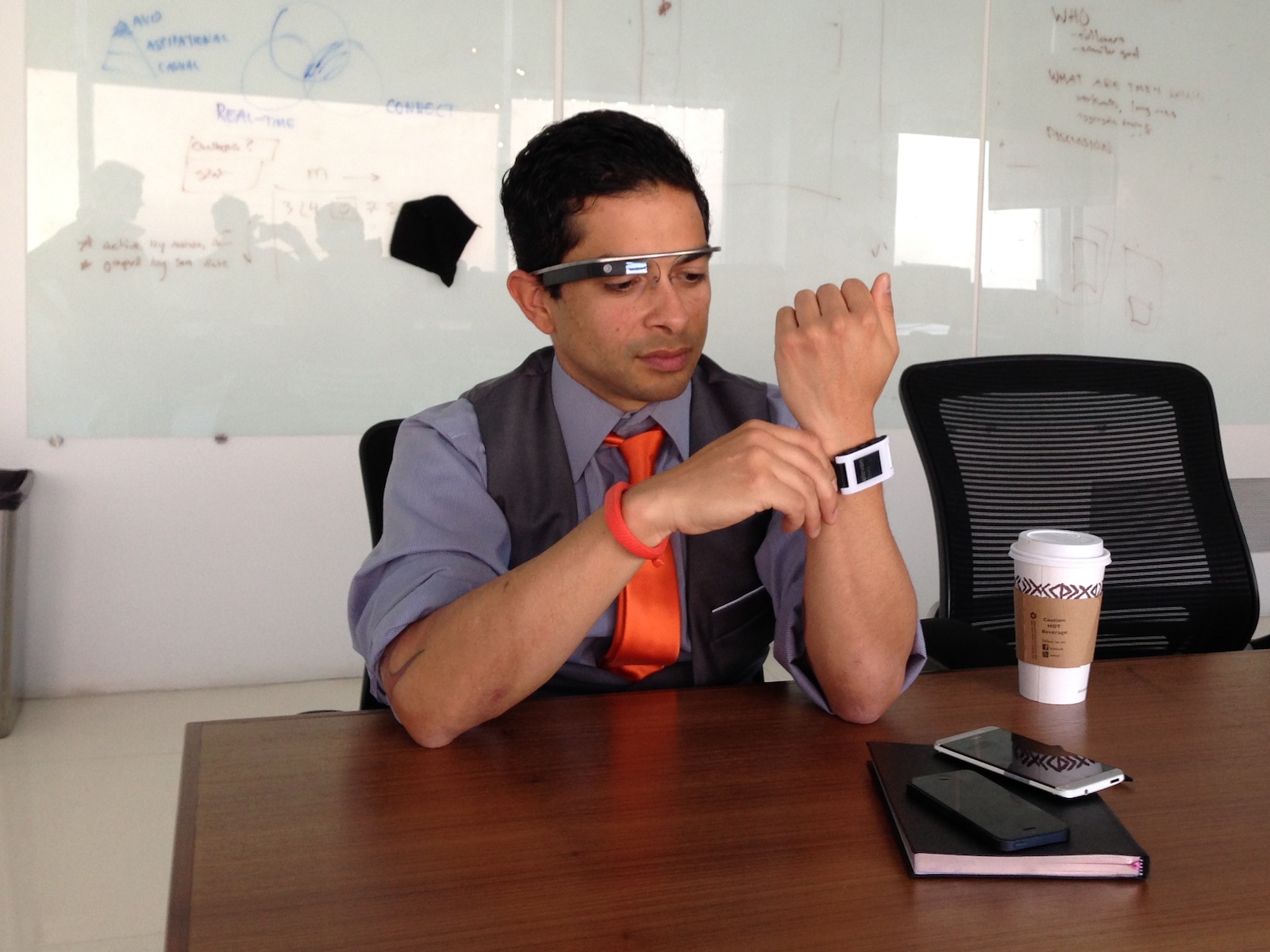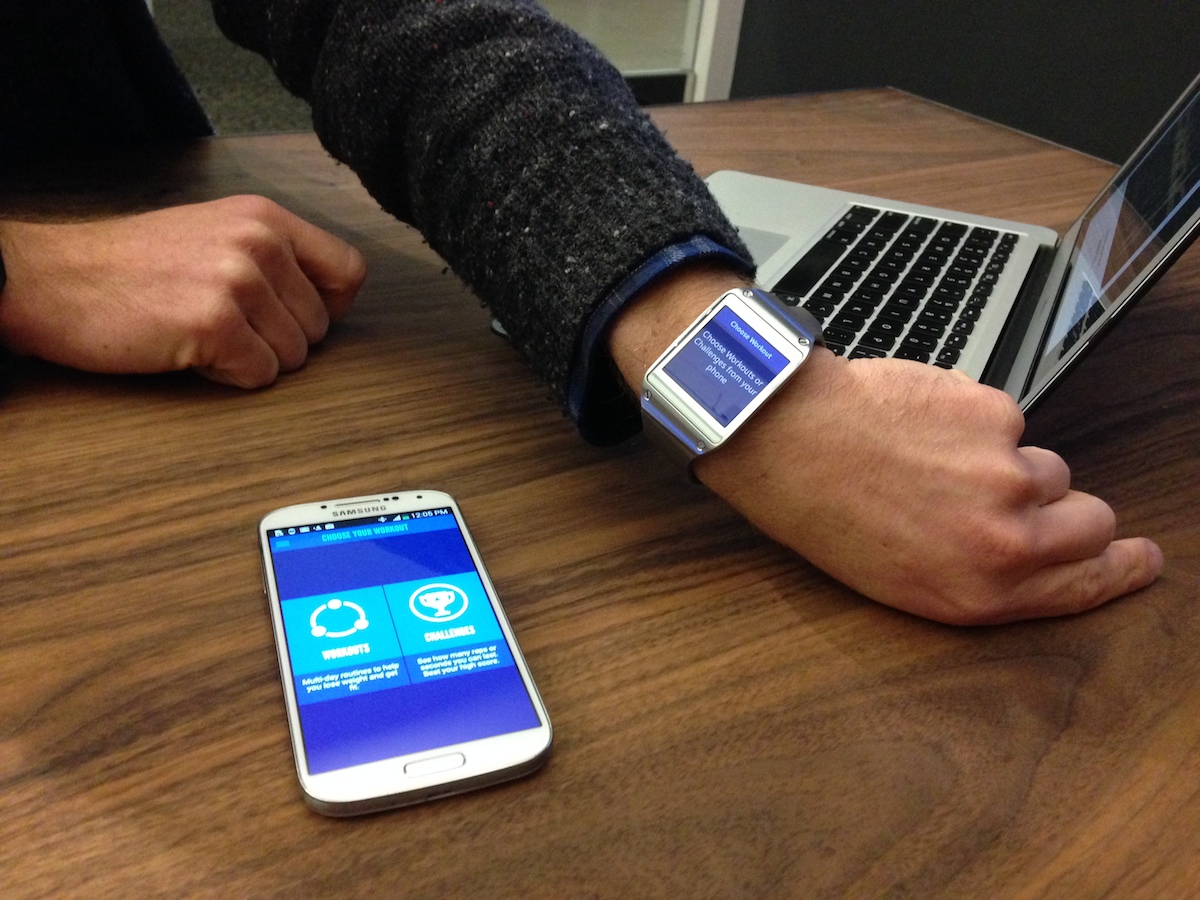

ReadWriteBody is an ongoing series where ReadWrite covers networked fitness and the quantified self.
It took me a long time to take to running, that solitary sport. Even now, I find myself pulling out my smartphone to check my route, see my pace and my heart rate, and maybe even fire off a tweet—anything to distract from the drudge of the trudge.
So I was intrigued to test out Strava, one of the more interesting running apps I’ve tried, on Google Glass. Strava is a fitness app that tracks your progress and allows users to create competitive intervals along a route.
I met Mateo Ortega, an engineer focused on wearable devices, at Strava’s San Francisco headquarters. He fitted me out with a Glass headset and a paired iPhone.
“Okay, Glass,” I told the voice-controlled device. “Start a run.”
And away I went, down Third Street, past the ballpark, and past a statue of former Giants player Willie McCovey down the waterfront. As I passed the statue, Glass told me that I’d started a segment I’d previously marked on Strava’s website.

Not Quite Ready For The Road
The drawbacks of Glass, a $1,500 device which is still in a limited beta period, were readily apparent. The display was hard to see in the bright sun; the audio was hard to hear against the background noise of the city and the thwap of my sneakers on the pavement. A finicky data connection—the Strava app for Glass depends on your phone for a GPS signal—conked out mid-run.
Yet the potential was clear. I could keep my eyes on the road ahead rather than looking down at my phone. Snapping a photo was a simple tap of a button. And though I didn’t attempt it, it would have been cool to do a live Hangout with my nephew while showing him San Francisco’s urban landscape.
And the experience—particularly sound quality—might have been improved by the most recent update to Google Glass, which allows for mono or stereo earbuds.
The most intriguing thing, Ortega noted, is how Glass shifts how people use Strava. On Strava’s smartphone apps for running and cycling, you only see your performance on a particular segment after the fact. On Glass, a Strava user hears this information when you approach a starting point.
“Every time you start a segment, you hear your PR,” or personal record, Ortega said. “All of a sudden you’re going for time when you thought you were going for an easy ride.”
Okay, Coach
The real potential for Glass may not actually be in equipping exercisers with it. Exos, a company that trains athletes, military personnel, and executives, has been testing Glass in its fitness programs.
“It’s all about how we can make staff more efficient,” John Golden, Exos’s president of product pioneering, recently told me. A Glass-equipped coach can see key data points about clients and adjust their training on the fly, based on a set of training rules Exos developed working with athletes. (While Golden wouldn’t disclose the name of the client in question, job listings show that Exos is hiring coaches for a training center in Mountain View, California, which happens to also be the location of Google headquarters and other tech titans like Intuit.)
Glass could also work in smaller gyms. I recently trained with Chris Merritt, the cofounder of Beyond Strength Performance in northern Virginia. His gym uses a flat-screen monitor which displays trainees’ heart-rate zones and performance in real time. It’s easy to see how that data, streamed to a trainer’s Glass headset, could lead to an even more intense workout.
Pumping Up The Arm Race
The wrist remains a much more natural place for fitness devices. Grant Hughes, the cofounder of Focus Trainr, is making a bet on Samsung’s Galaxy Gear smartwatch. It’s virgin territory for fitness apps: There are only seven available for the Gear today.

Focus Trainr uses the Gear’s accelerometers to determine your position, and it can process this information so precisely that it can distinguish a pushup from a situp from a squat. You start with a diagnostic fitness test, and then it adjusts your workouts on the fly based on your actual performance. You can also control your workout from either the Gear’s screen or the companion app on a Samsung smartphone. I was impressed by how tightly the app on the phone and the watch kept in sync.
Hughes doesn’t want to stay restricted to the Gear: He’s hoping to build software that can run on any wrist-based device with the right sensors. But most fitness trackers are closed systems, designed to work with their own apps and services. He’ll have an uphill battle to open that up, but it’s one worth fighting.
Pebble, the smartwatch maker, has a promising platform, though the apps currently available are limited—you can start and stop a RunKeeper run, for example, using your Pebble watch. I also saw some promising wrist devices from EB Sports Group, Mio, and Salutron at the Consumer Electronics Show, most of which will be out this summer.
The common thread between all of them is a tighter loop between the device on your wrist and the phone in your pocket (or running belt). As Dan Rowinski noted last year, the ideal smartwatch would function independently from a smartphone—but we are far from having the technology we need for that. The apps that will win in the interim will work fluidly between devices, distributing features and data wherever they’re needed.
Read more : With Google Glass, Fitness Gets In Your Face

0 Responses
Stay in touch with the conversation, subscribe to the RSS feed for comments on this post.